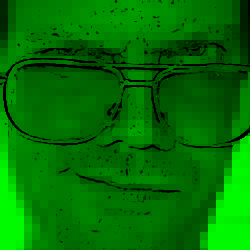Pam White talked about malls: theory vs reality. Victor Gruen wanted to make dense urban spaces amidst the suburban sprawl. He was thinking multi-use; how did we end up with shopping centers? At about the same time Gruen was dreaming up these spaces, USA tax laws changed so that merchants could get a tax write-off on property depreciation twice as fast as before. Ms. White told us some numbers about how much retail space got cranked out in the years right after… I forget exactly what those numbers were, but they were plenty high. Pam was kind of a tease, telling us about the cool mall photos she'd dug up in the basement and then not showing those photos. Maybe she's saving them for Gruen Day 2016.
Mathias Crawford talked about malls as privately-owned public space. He mostly studies the USA's recreation and parks efforts. After WWII, (Los Angeles then California then) the USA correctly predicted a huge population shift west and wanted to encourage these folks to still think of themselves as Americans. So the feds built and staffed recreation centers. They were public, but relied on government funding, which dried up during the Korean War. Shopping malls were privately owned, but were profitable at a time when the rec centers were going dark. So for a while, these shopping malls were our private space. California even has weird laws about how folks can practice political speech on these privately-owned public spaces. (I'm a Californian and assumed that malls could toss you out for whatever reason. (So if your puzzlehunt puzzle is disguised as a government petition, maybe the mall cops won't throw you out. (But that would be lying and wrong.)))
And we had a tour of Bayfair Center, focusing on how it had changed over time. Things just haven't been the same since Chevy's and Fresh Choice moved out; much of the enclosed area used to be open-air and thus somehow not air-conditioned in San Leandro but people didn't faint all the time for reasons? Plus we got to learn the term Pad site and its relation to Chili's.
